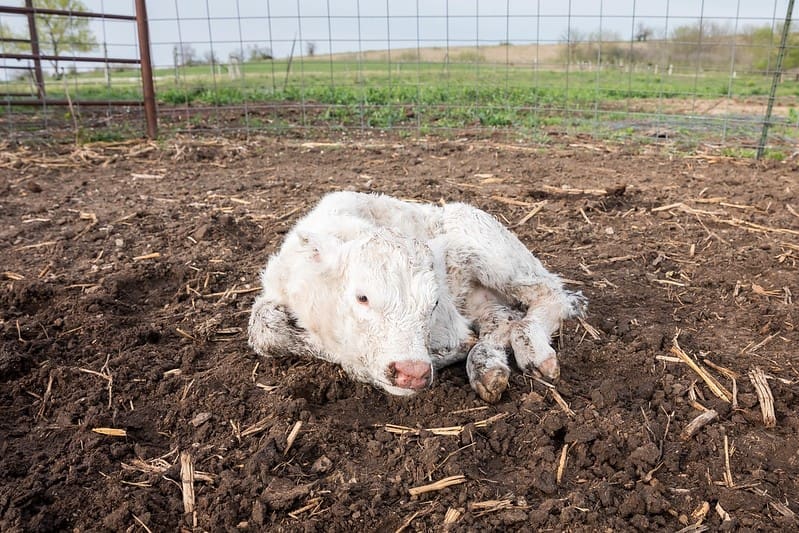With most of the nation’s fall-calving cowherd entering late gestation, Kansas State University beef cattle experts reminded producers of the causes and prevention methods associated with weak calf syndrome, or dummy calf, on a recent episode of the Cattle Chat podcast.
K-State veterinarians described the condition as the opposite of what a healthy calf should do at birth- get up quickly, nurse vigorously, and be active. Calves with this condition may seem healthy but lack interest in nursing and have limited awareness of their surroundings. The veterinarians explained that calves who experience a lack of oxygen during a difficult birth are at risk of developing this condition.
In utero, a calf receives blood and oxygen through the umbilical cord. Prolonged obstruction during a difficult birth, such as a breach or backward position, can cut off oxygen supply and lead to developmental issues. The severity of weak calf syndrome depends on the duration of oxygen deprivation.
Preventing this condition involves ensuring first-time calvers are at the right weight and checking pelvic size before birth. In addition, some infectious diseases, like leptospirosis and bovine viral diarrhea virus (BVD), can contribute to the condition, affecting brain function and physical development. Once a producer identifies a case of dummy calf, they should focus on addressing the calf’s nutritional needs. The primary goal is to ensure the calf receives colostrum, which may require using a tube to feed it initially and then encouraging it to nurse from a bottle.













